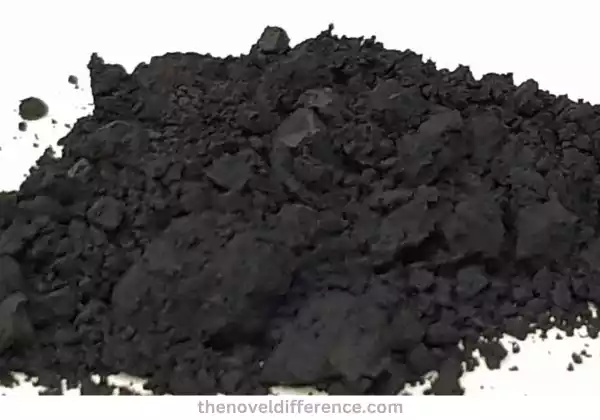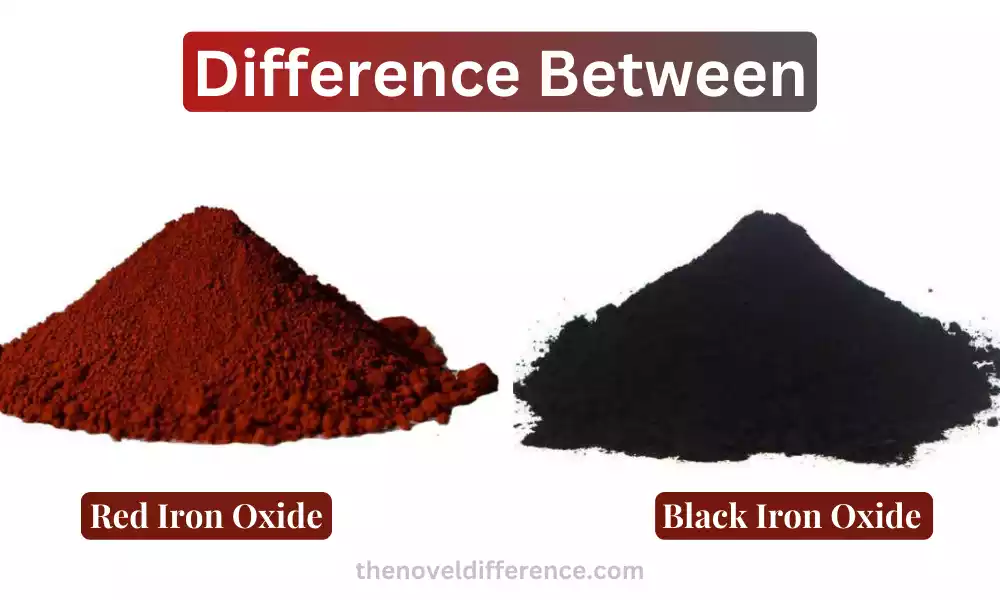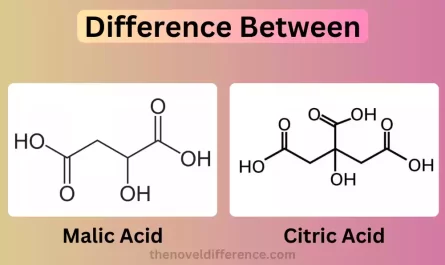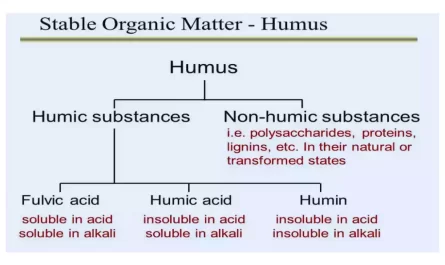Red and black iron oxide differs most clearly by occurring as solid red-brown solids whereas the latter occurs as black powders. Furthermore, red iron oxide has strong magnetic properties while ferrimagnetism exists only with its counterpart – red iron oxide being magnetic while ferrimagnetic ness does not.
Overview of Red Iron Oxide and Black Iron Oxide
Red Iron Oxide: Red iron oxide, also known as hematite (Fe2O3), is a naturally occurring mineral and one of the most common forms of iron oxide.
It gets its red color from the presence of iron in its ferric state. Here is an overview of red iron oxide:
- Composition and Chemical Properties:
-
- Chemical Formula: Fe2O3
- Molecular Weight: 159.69 g/mol
- Crystal Structure: Hexagonal or trigonal
- Density: 5.24 g/cm3
- Melting Point: 1,565°C (2,849°F)
- Insoluble in water
- Physical Characteristics:
-
- Color: Red to reddish-brown
- Fine powder or granular form
- Non-magnetic
- High opacity
- Resistant to fading and weathering
- Applications and Uses:
-
- Pigments in Paints and Coatings: Red iron oxide is widely used as a pigment in paints, coatings, and varnishes due to its excellent lightfastness, color stability, and durability.
- Colorant in Ceramics and Glass: It is used as a colorant in ceramic glazes, tiles, pottery, and glass manufacturing, providing shades of red, brown, and yellow.
- Additive in Concrete and Construction Materials: Red iron oxide is added to concrete and construction materials to provide coloration, enhancing the aesthetic appeal of architectural elements.
- Catalysts and Magnetic Materials: Certain forms of red iron oxide are used as catalysts in various chemical reactions, and hematite is also utilized in magnetic materials.
Black Iron Oxide: Black iron oxide, also known as magnetite (Fe3O4), is another common form of iron oxide. It exhibits magnetic properties and is widely used in magnetic technologies. Here is an overview of black iron oxide:
- Composition and Chemical Properties:
-
- Chemical Formula: Fe3O4
- Molecular Weight: 231.53 g/mol
- Crystal Structure: Cubic
- Density: 5.17 g/cm3
- Melting Point: 1,597°C (2,907°F)
- Insoluble in water
- Physical Characteristics:
-
- Color: Black to dark gray
- Fine powder or granular form
- Magnetic properties
- Good electrical conductivity
- High density
- Applications and Uses:
-
- Pigments in Inks, Plastics, and Rubber: Black iron oxide is utilized as a pigment in inks, plastics, and rubber products due to its deep black color and UV stability.
- Magnetic Recording Media: It is used in the production of magnetic recording media, such as audio and video tapes, hard drives, and credit cards with magnetic stripes.
- Magnetic Ink Character Recognition (MICR): MICR technology, used in banking and financial institutions, utilizes black iron oxide-based magnetic inks for check and document encoding.
- Magnetic Resonance Imaging (MRI) Contrast Agent: Magnetite nanoparticles are used as contrast agents in MRI scans to enhance imaging and diagnosis.
Red and black iron oxide differ in their colors, properties, and applications. Red iron oxide is primarily used as a pigment, while black iron oxide finds applications in magnetic technologies and as a black pigment in various industries.
Definition of Iron Oxide
Iron oxide refers to a group of chemical compounds composed of iron and oxygen. It is commonly found in nature and has a range of different colors, including red, brown, yellow, and black, depending on its specific composition and structure.
Iron oxide compounds are widely used in various industries due to their properties, such as their ability to impart color, provide corrosion resistance, and act as catalysts.
They play a significant role in fields such as pigments, paints, coatings, ceramics, construction materials, plastics, rubber, and magnetic technologies.
Iron oxide compounds are typically formed through the oxidation of iron in the presence of oxygen, either naturally over long periods or through controlled chemical processes.
Importance of Iron Oxide in various industries
Iron oxide holds great importance in various industries due to its diverse properties and applications. Some of the key industries where iron oxide is extensively used are:
- Pigments and Coatings: Iron oxide pigments, particularly red and yellow variants, are widely employed in the production of paints, coatings, and inks. They provide vibrant and durable coloration, excellent lightfastness, and resistance to weathering, making them suitable for architectural coatings, automotive paints, industrial coatings, and artistic materials.
- Construction and Concrete: Iron oxide pigments are commonly used in the construction industry to color concrete and enhance its aesthetic appeal. They are added to concrete products such as paving stones, tiles, bricks, and architectural precast elements, enabling a wide range of colors and textures.
- Ceramics and Glass: Iron oxide, particularly in the form of red iron oxide, is utilized as a colorant in ceramics and glass manufacturing. It imparts various shades of brown, red, and yellow to ceramic tiles, pottery, glassware, and decorative items.
- Plastics and Rubber: Iron oxide pigments find application in the plastics and rubber industries to provide coloration and UV resistance. They are employed in the production of plastic products, PVC pipes, automotive parts, rubber goods, and synthetic fibers.
- Magnetic Technologies: Iron oxide, specifically black iron oxide or magnetite, possesses magnetic properties and is utilized in numerous magnetic applications. It is used in the production of magnetic recording media like audio and video tapes, hard drives, and credit cards with magnetic stripes. Additionally, it serves as a contrast agent in magnetic resonance imaging (MRI) for medical diagnostics.
- Catalysts: Certain forms of iron oxide, such as hematite and magnetite, exhibit catalytic properties. They are employed as catalysts in various chemical processes, including ammonia synthesis, Fischer-Tropsch synthesis, and water-gas shift reactions.
- Environmental Remediation: Iron oxide nanoparticles have shown promise in environmental remediation applications. They can be utilized for the removal of heavy metals from water, wastewater treatment, and soil remediation due to their adsorption capabilities.
These examples illustrate the significance of iron oxide in different industries, highlighting its versatility, durability, and desirable properties for a wide range of applications.
Red Iron Oxide
Red iron oxide, also known as ferric oxide or hematite (Fe2O3), is a commonly used pigment in various industries.
Here are some key points about red iron oxide:
- Composition and Chemical Properties:
-
- Chemical Formula: Fe2O3
- Molecular Weight: 159.69 g/mol
- Crystal Structure: Hexagonal or trigonal
- Density: 5.24 g/cm3
- Melting Point: 1,565°C (2,849°F)
- Insoluble in water
- Color and Appearance:
-
- Red iron oxide is characterized by its distinct red to reddish-brown color.
- It is available in various shades and can range from bright red to deep brown.
- Pigment Applications:
-
- Red iron oxide is widely used as a pigment in paints, coatings, and varnishes.
- It provides excellent color stability, opacity, and lightfastness, making it suitable for both indoor and outdoor applications.
- It is commonly used in architectural coatings, automotive paints, industrial coatings, and artistic materials.
- Ceramic and Glass Industry:
-
- Red iron oxide is used as a colorant in ceramic and glass manufacturing.
- It imparts shades of red, brown, and yellow to ceramic glazes, tiles, pottery, and glass products.
- It adds aesthetic appeal and enhances the visual appearance of ceramic and glass items.
- Concrete and Construction:
-
- Red iron oxide is added to concrete and construction materials to provide coloration and enhance the aesthetic appeal of architectural elements.
- It is used in applications such as decorative concrete, paving stones, bricks, and architectural precast elements.
- It allows for a wide range of color options and provides durability and resistance to weathering.
- Other Applications:
-
- Red iron oxide is utilized in other industries as well, such as plastics, rubber, and cosmetics, to provide coloration and UV resistance.
- It can be used in the manufacturing of iron oxide pigments for various applications.
- Safety Considerations:
-
- Red iron oxide is generally considered safe for use in pigments and coatings.
- However, as with any fine powder, proper handling measures should be followed to prevent inhalation and contact with eyes or skin.

Red iron oxide’s vibrant color, stability, and versatility make it a valuable pigment in the industry. Its applications span across paints, coatings, ceramics, glass, concrete, and more, adding aesthetic value and durability to various products and structures.
Composition and Chemical Properties
The composition and chemical properties of red iron oxide (Fe2O3) include the following:
- Chemical Formula: Fe2O3
-
- The formula indicates that red iron oxide consists of two iron (Fe) atoms bonded with three oxygen (O) atoms.
- Molecular Weight: 159.69 g/mol
-
- Red iron oxide has a molecular weight of approximately 159.69 grams per mole, which is calculated based on the atomic masses of iron (55.85 g/mol) and oxygen (16.00 g/mol).
- Crystal Structure: Hexagonal or Trigonal
-
- Red iron oxide crystallizes in a hexagonal or trigonal crystal structure. This arrangement of atoms contributes to its physical properties and stability.
- Density: 5.24 g/cm3
-
- The density of red iron oxide is approximately 5.24 grams per cubic centimeter. It indicates the mass of the substance per unit volume and influences its physical behavior.
- Melting Point: 1,565°C (2,849°F)
-
- Red iron oxide has a relatively high melting point of 1,565 degrees Celsius (2,849 degrees Fahrenheit). This temperature signifies the point at which the solid form transitions into a liquid state.
- Insoluble in Water
-
- Red iron oxide is insoluble in water, meaning it does not readily dissolve in water or form a homogeneous mixture. This property allows for its stability in various applications and environments.
- Oxidation State: Fe3+
-
- In red iron oxide, iron exists in the +3 oxidation state (Fe3+). Each iron atom loses three electrons to achieve a stable configuration and forms ionic bonds with oxygen atoms.
- Magnetic Properties:
-
- Red iron oxide is typically non-magnetic or weakly magnetic. It does not possess strong magnetic properties like black iron oxide (Fe3O4), also known as magnetite.
Understanding the composition and chemical properties of red iron oxide provides insights into its behavior, reactivity, and applications. These properties contribute to its use as a pigment, colorant, and additive in various industries, showcasing its stability and versatility.
Black Iron Oxide
Black iron oxide, also known as magnetite (Fe3O4), is a form of iron oxide with distinct properties. Here are some key points about black iron oxide:
- Chemical Formula: Fe3O4
-
- The chemical formula indicates that black iron oxide consists of three iron (Fe) atoms bonded with four oxygen (O) atoms.
- Molecular Weight: 231.53 g/mol
-
- Black iron oxide has a molecular weight of approximately 231.53 grams per mole, which is calculated based on the atomic masses of iron (55.85 g/mol) and oxygen (16.00 g/mol).
- Crystal Structure: Cubic
-
- Black iron oxide crystallizes in a cubic crystal structure. The arrangement of atoms in this structure contributes to its physical and magnetic properties.
- Density: 5.17 g/cm3
-
- The density of black iron oxide is approximately 5.17 grams per cubic centimeter. It indicates the mass of the substance per unit volume and influences its physical behavior.
- Melting Point: 1,597°C (2,907°F)
-
- Black iron oxide has a relatively high melting point of 1,597 degrees Celsius (2,907 degrees Fahrenheit). This temperature represents the point at which the solid form transitions into a liquid state.
- Magnetic Properties:
-
- Black iron oxide is strongly magnetic due to its crystal structure and high iron content. It exhibits ferromagnetism, meaning it can be magnetized and retains its magnetism even after the external magnetic field is removed.
- This magnetic property makes black iron oxide valuable in applications related to magnetic recording, such as audio and video tapes, hard drives, and credit cards with magnetic stripes.
- Insoluble in Water
-
- Similar to red iron oxide, black iron oxide is insoluble in water. It does not readily dissolve in water or form a homogeneous mixture.

Understanding the composition and properties of black iron oxide, particularly its magnetic characteristics, is crucial in applications where magnetic properties are desired.
Its magnetic nature allows for its use in various technological applications, such as magnetic recording media, while its chemical stability and insolubility contribute to its durability in different environments.
Composition and Chemical Properties
The composition and chemical properties of black iron oxide, also known as magnetite (Fe3O4), include the following:
- Chemical Formula: Fe3O4
-
- The chemical formula indicates that black iron oxide consists of three iron (Fe) atoms bonded with four oxygen (O) atoms.
- Molecular Weight: 231.53 g/mol
-
- Black iron oxide has a molecular weight of approximately 231.53 grams per mole, calculated based on the atomic masses of iron (55.85 g/mol) and oxygen (16.00 g/mol).
- Crystal Structure: Cubic
-
- Black iron oxide crystallizes in a cubic crystal structure. This arrangement of atoms contributes to its physical properties and magnetic behavior.
- Density: 5.17 g/cm3
-
- The density of black iron oxide is approximately 5.17 grams per cubic centimeter. It indicates the mass of the substance per unit volume and affects its physical behavior.
- Melting Point: 1,597°C (2,907°F)
-
- Black iron oxide has a relatively high melting point of 1,597 degrees Celsius (2,907 degrees Fahrenheit). This temperature denotes the point at which the solid form transitions into a liquid state.
- Oxidation States: Fe2+ and Fe3+
-
- Black iron oxide contains a mixture of Fe2+ (ferrous) and Fe3+ (ferric) ions. The iron atoms can exist in both +2 and +3 oxidation states within the crystal structure.
- Magnetic Properties:
-
- Black iron oxide is strongly magnetic and exhibits ferromagnetism. It is attracted to magnetic fields and can be magnetized, meaning it retains its magnetization even after the external magnetic field is removed.
- The presence of both Fe2+ and Fe3+ ions in its crystal structure contributes to its magnetic properties.
- Insoluble in Water
-
- Black iron oxide is insoluble in water. It does not readily dissolve or mix with water, indicating its chemical stability and resistance to dissolution.
Understanding the composition and chemical properties of black iron oxide, particularly its magnetic behavior and stability, is important in various applications such as magnetic recording media, magnetic resonance imaging (MRI) contrast agents, and other magnetic technologies.
Differences Between Red and Black Iron Oxide
Red and black iron oxide are two distinct forms of iron oxide with notable differences in their composition, appearance, properties, and applications. Here are the key differences between red and black iron oxide:
- Composition:
-
- Red Iron Oxide: Chemical Formula – Fe2O3
- Black Iron Oxide: Chemical Formula – Fe3O4
- Color and Appearance:
-
- Red Iron Oxide: It has a red to reddish-brown color, providing warm earthy tones.
- Black Iron Oxide: It appears black or dark gray in color, often with a metallic sheen.
- Crystal Structure:
-
- Red Iron Oxide: Hexagonal or trigonal crystal structure
- Black Iron Oxide: Cubic crystal structure
- Magnetic Properties:
-
- Red Iron Oxide: Typically non-magnetic or weakly magnetic
- Black Iron Oxide: Strongly magnetic (exhibits ferromagnetism)
- Oxidation States:
-
- Red Iron Oxide: Iron exists in the ferric state, Fe3+
- Black Iron Oxide: Contains a mixture of both ferrous (Fe2+) and ferric (Fe3+) states of iron
- Applications:
-
- Red Iron Oxide: Primarily used as a pigment in paints, coatings, and ceramics. It provides vibrant and durable coloration and is resistant to weathering. Also used in the construction industry for coloring concrete and architectural elements.
- Black Iron Oxide: Widely used in magnetic technologies such as magnetic recording media (e.g., tapes, hard drives) and magnetic resonance imaging (MRI) contrast agents. Also utilized as a black pigment in inks, plastics, and rubber.
- Magnetic Behavior:
-
- Red Iron Oxide: Typically non-magnetic or weakly magnetic due to its crystal structure and iron oxidation state.
- Black Iron Oxide: Exhibits strong magnetic properties and can be magnetized due to its crystal structure and iron oxidation state.
These differences in composition, color, crystal structure, magnetic properties, and applications make red and black iron oxide suitable for specific industries and purposes.
Red iron oxide is valued for its pigmentation and color stability, while black iron oxide’s magnetic properties make it indispensable in magnetic technologies.
Side-by-Side Comparison – Red vs Black Iron Oxide in Tabular Form
Here is a side-by-side comparison of red and black iron oxide in a tabular form:
| Red Iron Oxide | Black Iron Oxide | |
|---|---|---|
| Color | Red to reddish-brown | Black or dark gray |
| Chemical Formula | Fe2O3 | Fe3O4 |
| Crystal Structure | Hexagonal or trigonal | Cubic |
| Density | 5.24 g/cm3 | 5.17 g/cm3 |
| Melting Point | 1,565°C (2,849°F) | 1,597°C (2,907°F) |
| Magnetic Properties | Non-magnetic or weakly magnetic | Strongly magnetic (ferromagnetic) |
| Oxidation States | Fe3+ | Mixture of Fe2+ and Fe3+ |
| Solubility in Water | Insoluble | Insoluble |
| Primary Applications | Pigments in paints, coatings, ceramics | Magnetic technologies, inks, plastics, rubber |
| Other Uses | Colorant in ceramics and glass, additive in concrete | Magnetic recording media, MRI contrast agent |
| Magnetic Behavior | Non-magnetic or weakly magnetic | Strongly magnetic (ferromagnetic) |
| Appearance | Fine powder or granular form | Fine powder or granular form |
This side-by-side comparison highlights the key differences between red and black iron oxide in terms of color, chemical formula, crystal structure, density, melting point, magnetic properties, oxidation states, solubility, primary applications, other uses, and appearance.
Similarities Between Red and Black Iron Oxide
While red and black iron oxide have notable differences, they also share some similarities.
Here are a few similarities between red and black iron oxide:
- Chemical Composition: Both red and black iron oxide are composed of iron (Fe) and oxygen (O). Red iron oxide has a chemical formula of Fe2O3, while black iron oxide has a formula of Fe3O4. They are both forms of iron oxide.
- Iron Content: Both red and black iron oxide contain iron as the primary element. Iron is an essential component in their chemical structure, contributing to their properties and applications.
- Insolubility: Both red and black iron oxide are insoluble in water. They do not readily dissolve in water or form a homogeneous mixture.
- Pigment Applications: Both red and black iron oxide are used as pigments in various industries. They provide coloration and are employed in paints, coatings, ceramics, and other materials where durable and stable pigmentation is desired.
- Stability: Both red and black iron oxide exhibit good stability. They are resistant to weathering, lightfast, and do not easily degrade over time, ensuring long-lasting coloration in the applications they are used in.
- Industrial Uses: Both red and black iron oxide find applications in industries such as construction, plastics, rubber, and cosmetics. They contribute to coloration, UV resistance, and other desirable properties in these industries.
While red and black iron oxide have distinct characteristics and applications, their shared chemical composition, insolubility, pigment properties, stability, and industrial uses provide common ground between them.
Conclusion
Red and black iron oxide are two distinct forms of iron oxide with unique characteristics, properties, and applications. Red iron oxide, also known as ferric oxide, is primarily used as a pigment in paints, coatings, ceramics, and construction materials.
It provides a range of red to reddish-brown colors and offers excellent color stability and durability. On the other hand, black iron oxide, known as magnetite, exhibits strong magnetic properties and finds applications in magnetic technologies, such as magnetic recording media and MRI contrast agents. It is also used as a black pigment in inks, plastics, and rubber.
While red and black iron oxide differ in color, crystal structure, magnetic properties, and applications, they share similarities in terms of chemical composition, insolubility, pigment applications, stability, and industrial uses.




